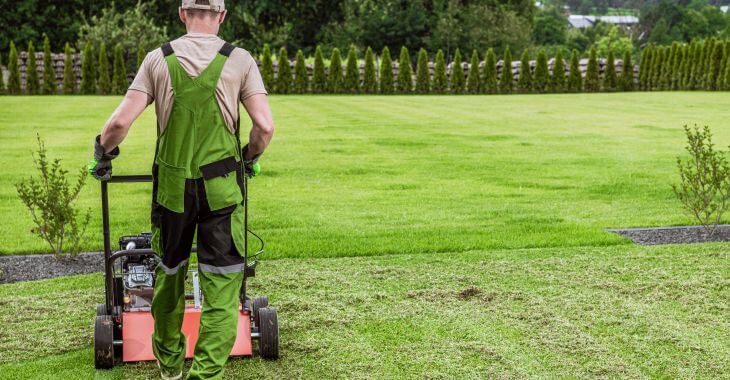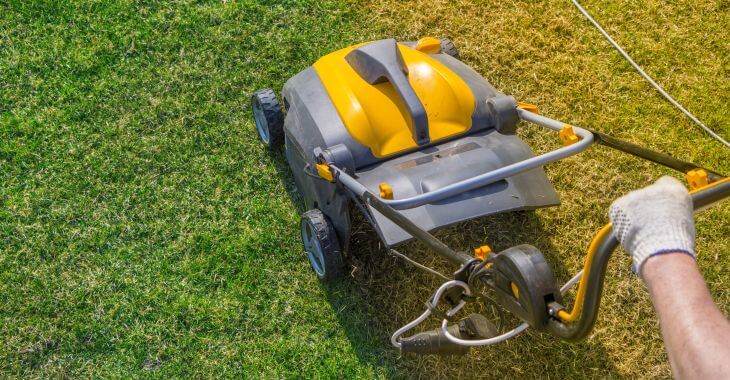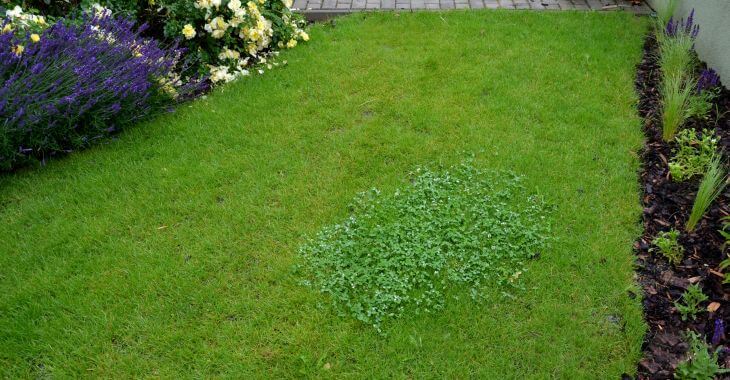Rejuvenate Your Yard with Spring Lawn Aeration

Cultivating a lush lawn is a constant battle. Your grass needs to compete against weeds, pests, fungus, drought and many other factors to grow. Every season has maintenance needed to keep grass healthy. One of the best services you can give your grass is spring lawn aeration.
What is Lawn Aeration?
Two of the nemeses of healthy grass are compacted soil and thick thatch. The grass roots need air, water and nutrients to flourish, and both these factors can contribute to suffocating your grass. Lawn aeration is the best method to address both these conditions to give your grass roots air and water.
Lawn aeration can be performed manually or with specialized machinery. The goal is to perforate the thatch and compacted soil to allow water, air and nutrients into the soil to feed your grass. Essentially, holes are poked every several inches through the lawn through the thatch and into the soil.
Aeration can make a big difference in how much water and air that your grass receives. It can loosen soil and break down thick thatch that strangles your grass. For most lawns, it is recommended to do this service every 1-2 years. Most landscapers will recommend spring lawn aeration versus during other seasons.
Why Perform Aeration in Spring?
After a cold or dormant winter, spring is the time to prepare your lawn for a hot summer ahead. As the season of renewal, it makes sense to give your lawn a new start with aeration in spring. This can loosen the soil, remove the dead thatch from the previous year and prepare the lawn for the next maintenance steps.
Early spring lawn aeration is the best way to prepare your lawn for summer. Aeration does remove thatch and loosen soil, but it also will remove some of the grass. Plugs or cores are removed as the soil is punched with machinery or manual tools, which needs to time to regrow before the hot summer weather arrives.
When you perform aeration in spring early enough, you have plenty of time to utilize the refreshed soil to nourish and rejuvenate your lawn. Aeration should be the first step in your spring lawn maintenance, followed by other lawn care.
What to Do After Aerating in Spring
Once you complete spring lawn aeration, you can begin evaluating what it needs to flourish in the months ahead. If you have plugs or cores from the aeration process, you will want to remove these or allow them to break them down before you begin the next steps in spring lawn maintenance.
- Overseeding Your Lawn
- If you have thin spots in your lawn, spring is the right time to reseed and add new life to your lawn. You will want to wait a few days after aeration to allow the soil to settle, but still be loose enough to receive the new seeds. You want to choose a good weather week that will not be too cool, hot or wet.
- Once you overseed your lawn, you need to make sure to give it a thorough watering. For most areas, this is a solid 15-20 minutes of water but not enough to flush away the seed you just added.
- Weed Control
- If you have weeds or want to prevent new weeds from forming, you will want to do this after aeration. The loosened soil will allow the herbicide to reach the weed roots hiding in the soil – a pre-emergent can stop weeds before they start, which gives your lawn a better chance of thriving in the summer.
- Spring Fertilizing
- Most lawns should be fertilized in the late spring. When you are planning what to do after aerating lawn areas, fertilizing should be one of the last on your list. You should wait 4-6 weeks to fertilize after overseeding or adding new seed. You should also wait 10-14 days after weed control before fertilizing.
- Fertilizing after spring lawn aeration allows the nutrients to reach the grass roots. You will get the most from your fertilizing efforts if you loosen the soil and remove thatch. Without aeration, many of the nutrients in fertilizer may never reach the roots, making it a waste of time and money.
- First Mow
- While you may want to get out and mow your lawn to make it look neat and tidy, give it some time to recover after an aeration. You now know what to do after aerating a lawn, but this is something you should not do. Seeding, weed control and fertilizing should be done first, then perform your first mow.

Spring lawn aeration is the ultimate way to maintain a healthy lawn, especially when you follow it with rejuvenating lawn care. Large lawns may require aerating machinery to complete in a timely manner. Contact a local landscaper that offers core aeration for lawns to achieve the best results.
